
All categories
Featured selections
Trade Assurance
Buyer Central
Help Center
Get the app
Become a supplier

(8134 products available)





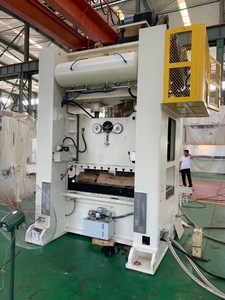








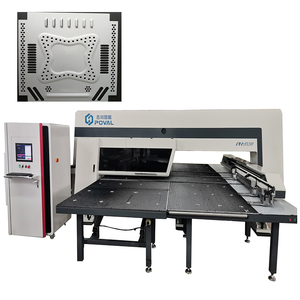


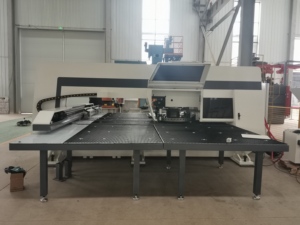



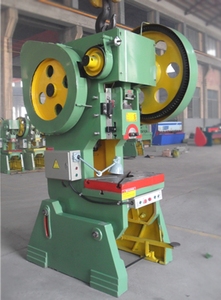

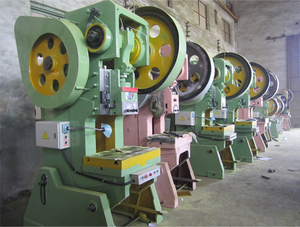
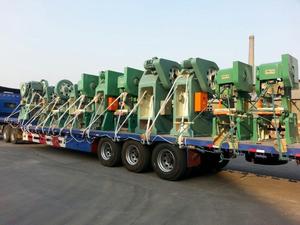
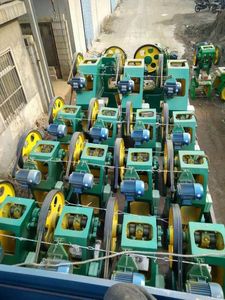

A perforating and punching machine is a device that creates holes or cuts in various types of materials, including metal, paper, plastic, etc. This machine comes in several types based on different criteria, from the purpose of use to the operating mechanism, control system, etc.
A perforating and punching machine can be divided into a perforating machine and a punching machine. A perforating machine creates a series of small holes or slots on the material, while a punching machine creates holes in the material by using a punch and die.
Ram-type machines and turret-type machines are two common types of perforating and punching machines. The former use hydraulic power to move the ram up and down, while the latter use a rotating turret as a tool holder. The turret rotates to position the desired tool for punching, perforating, or forming operations.
Another popular type is the C-frame perforating and punching machine. Its name comes from the shape of the machine, which resembles the letter "C." This machine can be easily mounted to a floor, bench, or stand, and it is suitable for a wide range of industrial applications.
Conventional perforating and punching machines are manually operated. They are suitable for small-scale production or simple processing tasks. CNC perforating and punching machines are equipped with a computer numerical control system. This system provides high precision and allows for automated operation and programmable tooling to achieve complex punching patterns or perforations.
The portable perforating and punching machine is small and lightweight. It is designed for on-site usage to give users the flexibility to move and handle the machine easily. Another example is the rotary perforating and punching machine, which uses a revolving turret to perform perforating or punching operations. This machine is often used in industries that require high productivity and efficiency, such as automotive manufacturing or electronics assembly.
Specification:
Operating speed: The operating speed of the perforating and punching machine is the number of punches or perforations that the machine can produce per minute. This speed is determined according to the machine's design, the material being treated, and the desired hole size. The operating speed of the machine is usually measured in the number of holes per minute or strokes per minute.
Workpiece size and thickness: The perforating and punching machine's workpiece size and thickness are the maximum workpiece dimensions and material thickness that the machine can effectively perforate or punch. The workpiece size refers to the length, width, and height of the material that the machine can process. The workpiece thickness is the maximum thickness of the material that the machine can handle. The machine's workpiece size and thickness are usually described in millimeters or inches.
Hole/punch size: The hole or punch size of the perforating and punching machine indicates the diameter of the hole or the punch size that the machine can produce. It can be a circular hole or a specific shape or size. The holes or punches created by the machine are usually described in millimeters, inches, or shapes. The perforating and punching machine can create various hole sizes, from small ones to large ones, depending on the purpose and type of the machine.
Power requirements: The power requirements of the perforating and punching machine indicate the power or electricity required for the machine to operate effectively. This power is usually described in watts (W) or kilowatts (kW). The perforating and punching machine operates with electric power. Depending on the machine's size and design, its power requirement may vary.
Maintenance:
Regular inspection: This is an integral part of the maintenance of the perforating and punching machine. Regular inspection ensures that the machine is always in good working order and there is no problem.
Cleaning: This is another crucial part of the maintenance of a perforating and punching machine. The machine can accumulate dust, debris, or metal chips during operation. Therefore, cleaning the machine at regular intervals can help ensure smooth operation and prevent any damage.
Lubrication: This is another important part of maintaining the perforating and punching machine. Lubricating the moving parts of the machine, such as the punching mechanism, the carriage, and the guide rails, reduces friction and wear between the components. As a result, this extends the life of the machine.
Replacement of consumables: The perforating and punching machine has consumable components, such as punches and dies. During the operation, these components may wear out or get damaged after prolonged use. Therefore, replacing these consumables at regular intervals is crucial to maintain the perforating and punching machine's efficiency and quality of work.
Usage scenarios of a perforating and punching machine
Perforating and punching machines are used across multiple sectors for various applications. Here are some common usage scenarios.
Creating ventilation holes: In the construction and HVAC industries, the punching machine is often used to add ventilation holes or perforations to ducts, panels, and other products. Ventilation holes not only improve the aesthetic appearance but also enhance the airflow performance of the entire system.
Decorative perforation: The perforating and punching machine can be used to create decorative perforation patterns on metal plates, screens, and panels. These perforated products are ideal for interior design, architecture, furniture, or signage applications, adding visual appeal and unique style to the space.
Jewelry and leather processing: In the fashion industry and handicraft industry, perforating and punching machines are used to make jewelry, leather products, and accessories, among other items. These machines can be used to create perforation designs on belts, bags, shoes, and other leather products, giving them a personalized touch and enhancing their fashion appeal.
Automotive manufacturing: Punching machines are widely used in the automotive industry. They can be used to punch holes in car bodies, chassis, and other components. Punching machines can also be used to create various brackets and clips by punching and cutting metal sheets, meeting different automotive assembly and production needs.
Food processing and packaging: The perforating and punching machine has a wide range of applications in the food processing and packaging industries. It can be used to punch holes in food packaging bags or containers, which is convenient for gas exchange and preservation. Perforating machines can also be used to make small holes in bakery products to control steam during the baking process and achieve the desired texture.
When selecting a perforating and punching machine for sale, it is essential to consider different types and models machine buyers may be interested in. This includes machines with varying capacities, sizes, and features to meet various industrial applications and demands. It's also crucial to consider machines that cater to different materials, such as metal, plastic, and paper, and those with various perforating patterns.
Consider machines from different manufacturers to provide buyers with multiple options. It's also important to consider the cost of the machines and ensure they fit different buyers' budgets. Additionally, when choosing perforating and punching machines for sale, it's important to consider machines with easy operation and those that come with clear manuals and instructions. This is crucial to ensure the training process for the user is straightforward and smooth. Additionally, consider machines that come with safety features and those that comply with industry standards and regulations to enhance the safety of the user.
Since the machines are used in different industries, including the automotive, construction, and packaging industries, it is crucial to consider machines with different functions and capabilities. This will help meet the diverse needs of buyers. Additionally, when purchasing the machines, it's important to consider those that come with different tooling options to provide buyers with versatility.
It's also essential to consider perforating and punching machines made of high-quality materials to ensure they are durable. Such machines require minimal maintenance and repair, saving the buyer on additional costs. Moreover, when choosing the machines, one should consider those with additional features, such as programmable controls and automation, and those that come with accessories, such as lubrication systems.
When choosing a perforating and punching machine to buy, it's important to consider those that come with a warranty and those that the supplier offers reliable customer support. This is crucial in case the machine has issues and requires repairs. Additionally, it's important to consider a machine that the supplier offers fast shipping services to ensure the buyer receives the machine on time.
Q1: What is the difference between perforating and punching in the machine?
A1: The key difference is the kind of hole they create. A perforating machine makes a series of small holes in a material. This could be a line of holes or many holes in a specific pattern. A punching machine creates a single, larger hole or a hole of a specific shape in the material.
Q2: What are some common perforating patterns?
A2: Some common perforating patterns are a straight line, a staggered pattern (where the holes are not in a straight line but are staggered), a honeycomb pattern, and a custom pattern. Custom patterns can be almost anything and are usually designed for a particular purpose.
Q3: What materials can perforating and punching machines work with?
A3: These machines can work with a variety of materials. These include paper, plastic, rubber, thin sheet metal, and composite materials.
Q4: What are the different types of punches used in a punching machine?
A4: The three most common types of punches used in a punching machine are the round punch, the shaped punch, and the multi-dimensional punch. The round punch creates round holes of different diameters in the materials. The shaped punch creates holes of various shapes, such as square, rectangle, or oval. The multi-dimensional punch creates multiple holes at the same time.